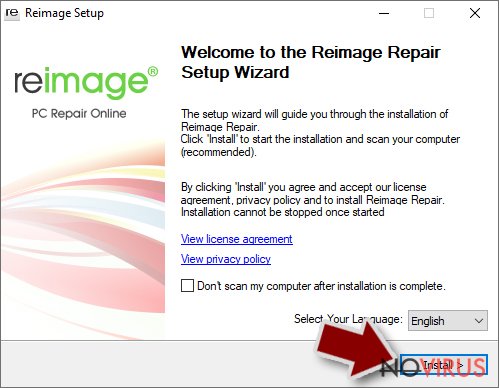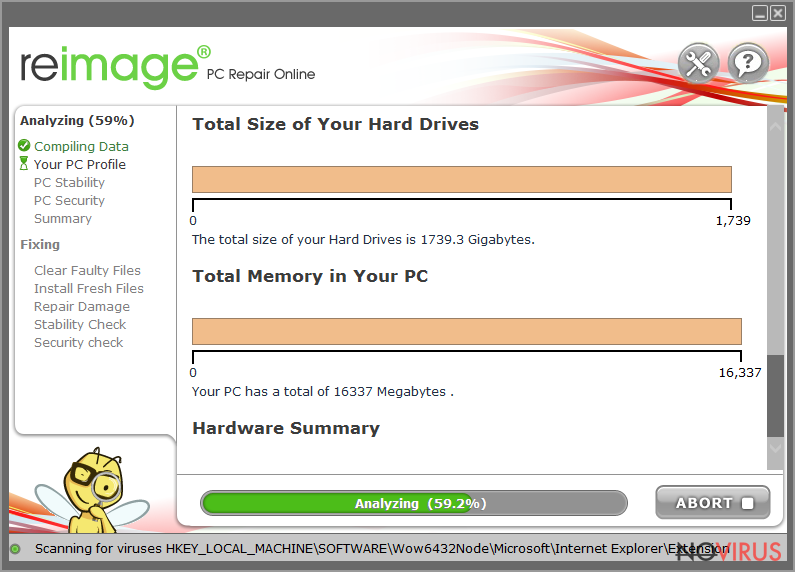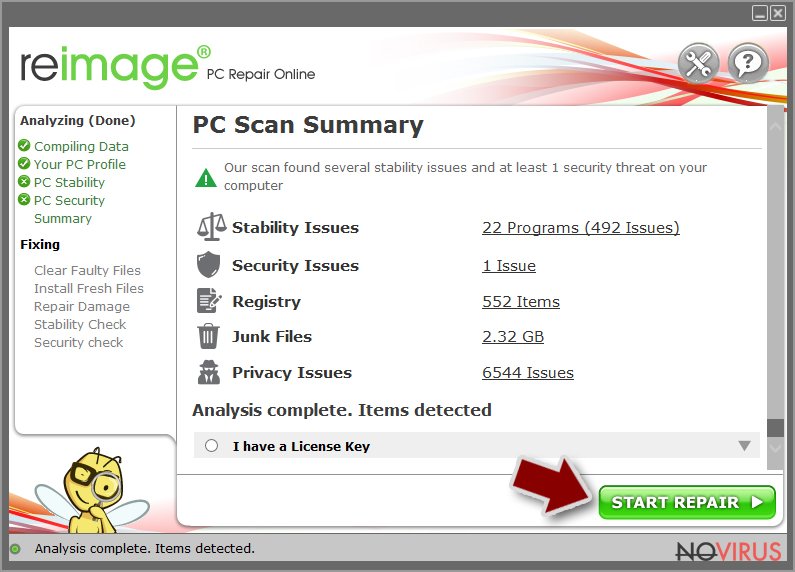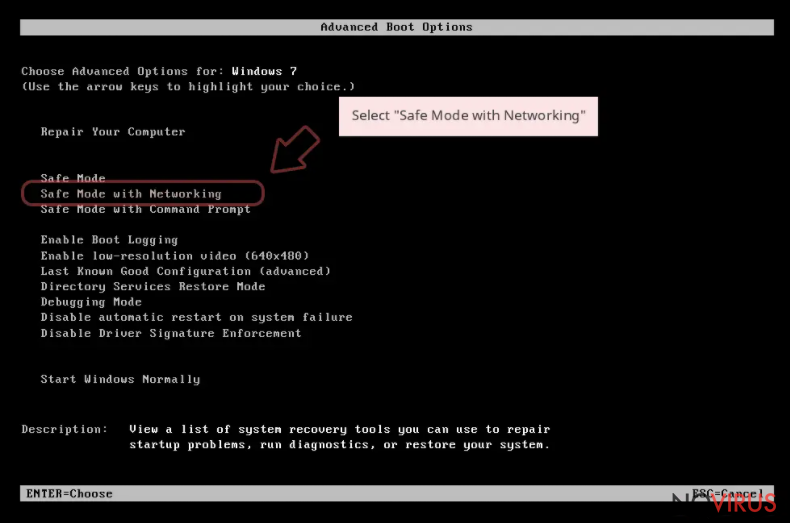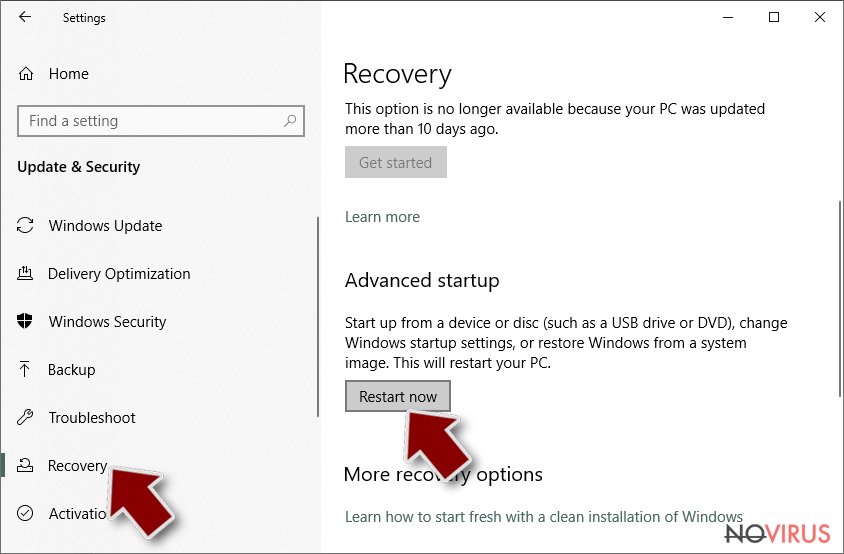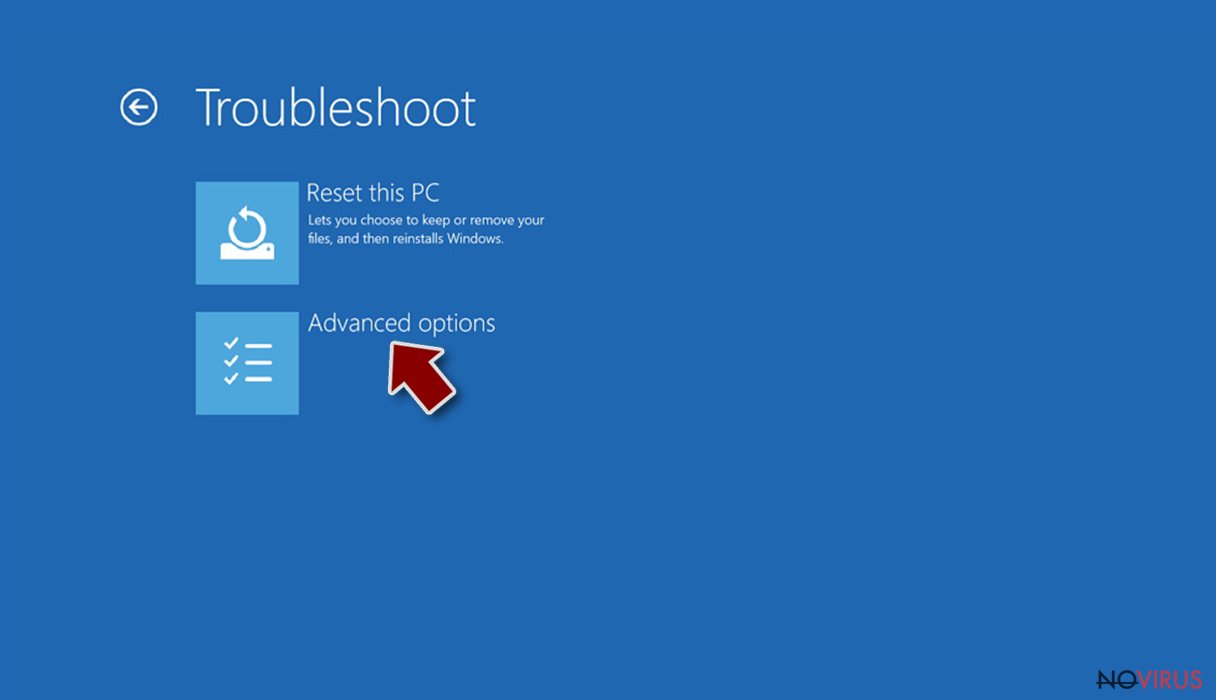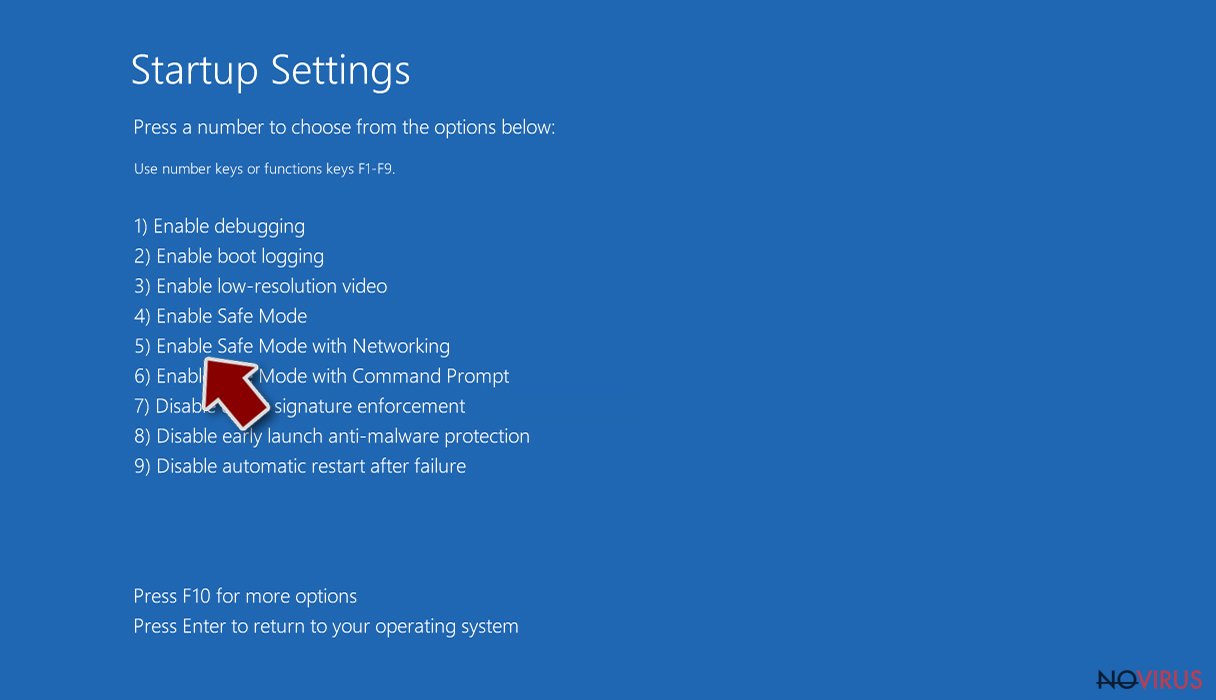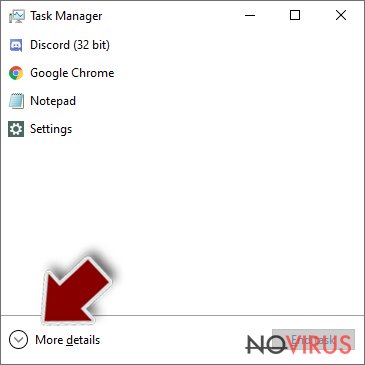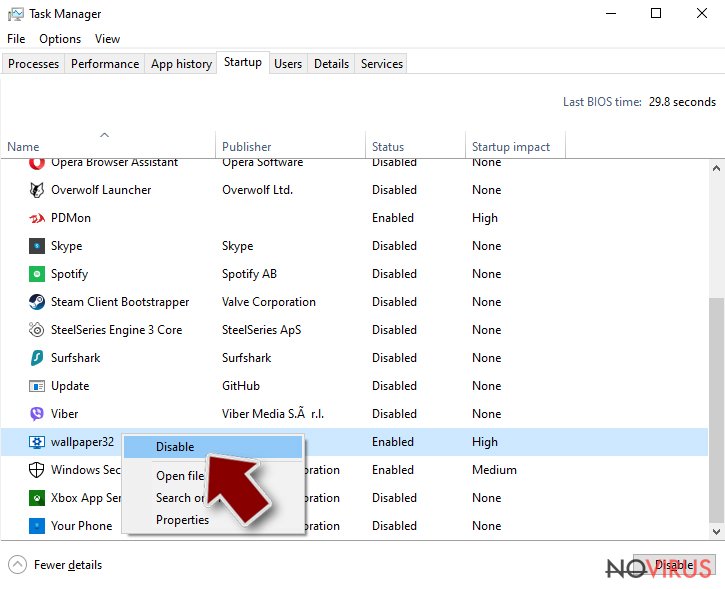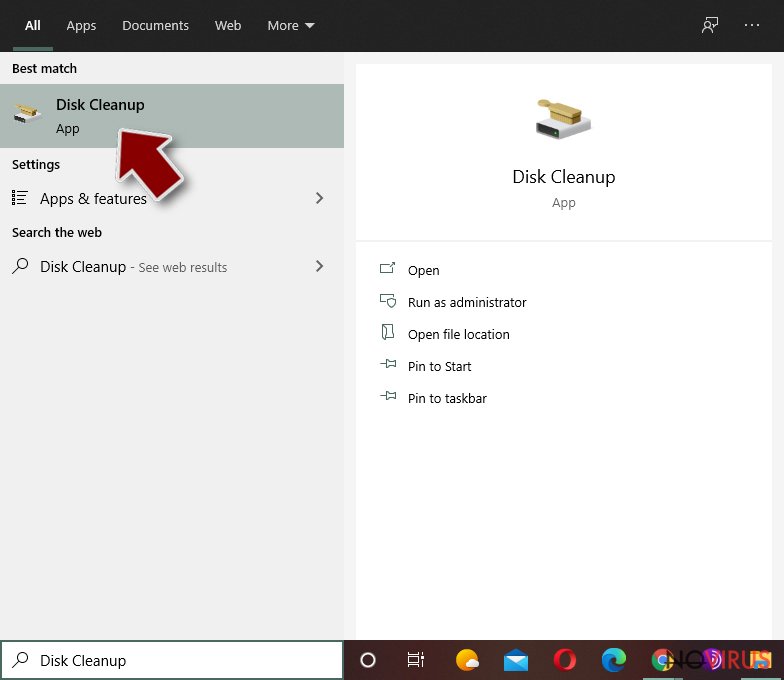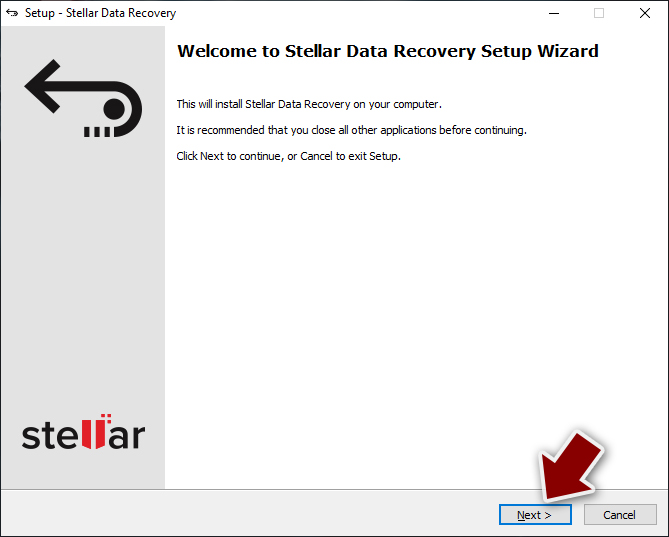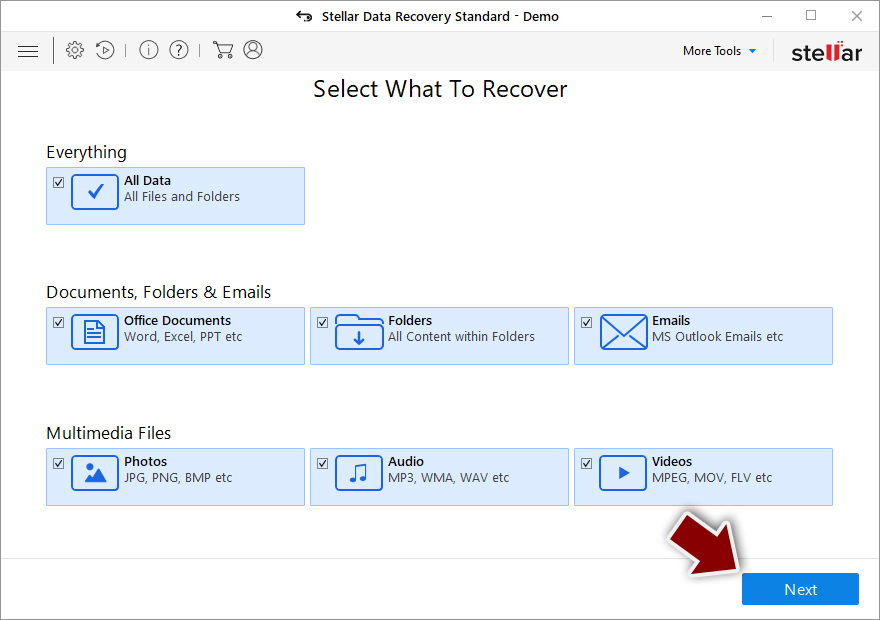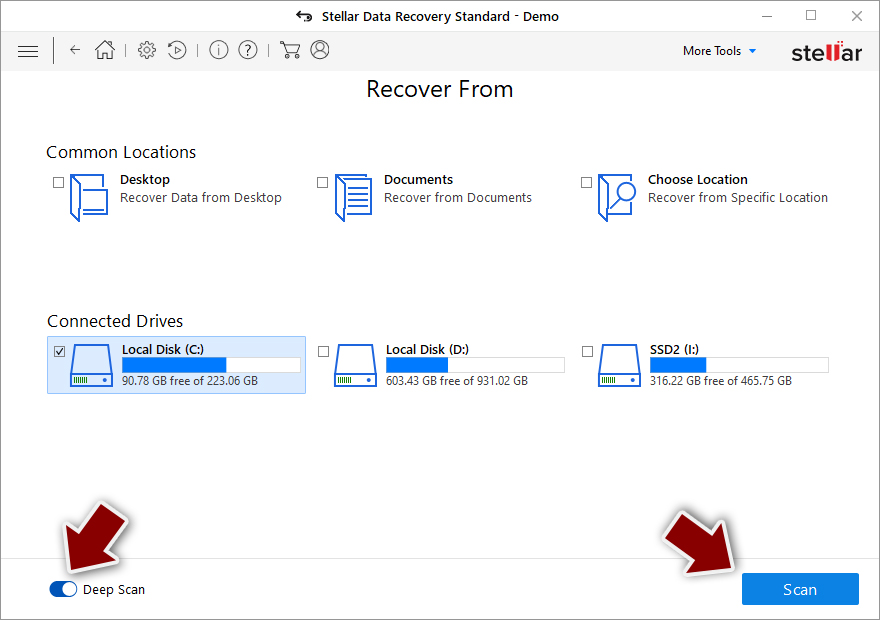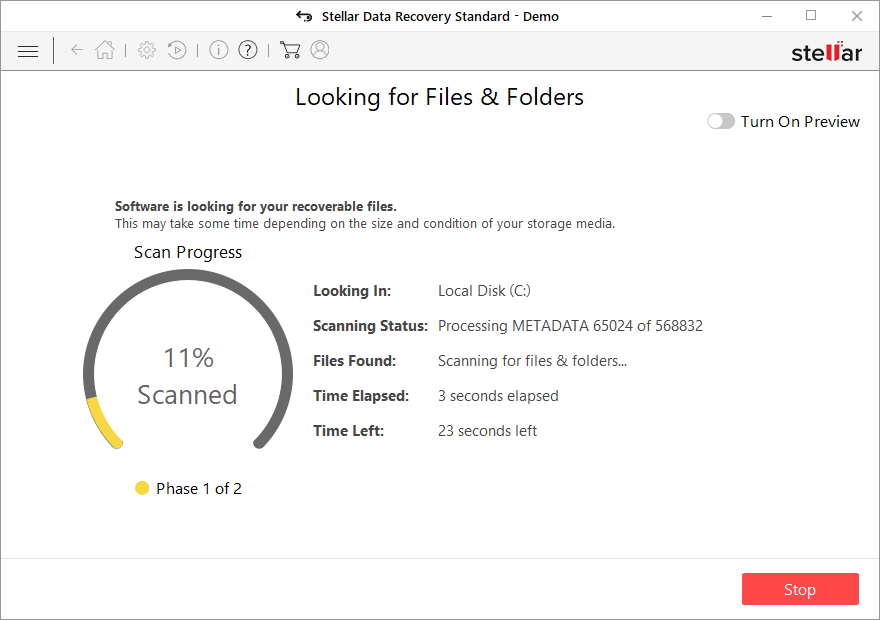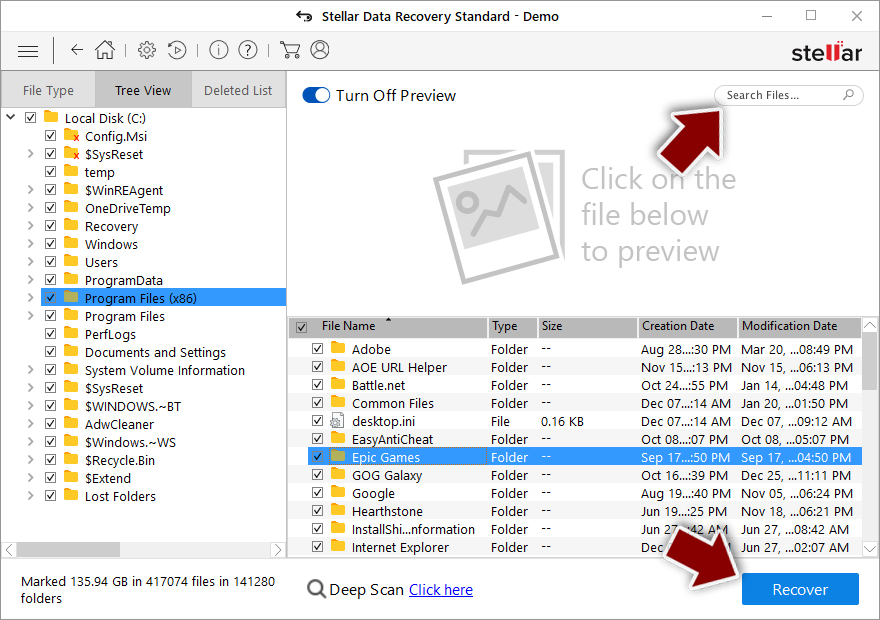Uninstall Reqg virus (Decryption Steps Included)
Reqg virus Removal Guide
Description of Reqg file virus
Reqg ransomware is a malicious program that encrypts the personal documents found on the victim's computer
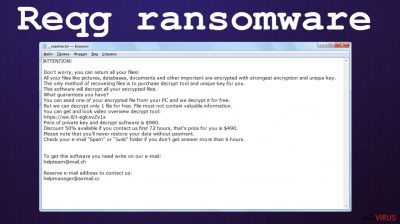
Reqg file virus makes data useless and unopenable when the infection finds its way on the vulnerable machine. It marks files with an uncommon extension, then displays a message which offers to decrypt the data if payment in Bitcoin is made. The instructions are placed as a read-only text file on their desktop and instruct them to send payments by following links or sending funds directly from their wallet app. The _readme.txt file offers a discount, but criminals should never be trusted.
The ransomware infection restricts access to data by encrypting files with the .reqg extension and then asking for money in exchange of this information if you do not want your personal documents or photos encrypted. In most cases, payment is not recommended because threat actors can still affect the machine and commonly found files to control the victim.
| Name | Reqg file virus |
|---|---|
| Type | Ransomware |
| Ransom message | _readme.txt |
| Demand | $980/$490 |
| Distribution | Malicious files from emails, software and game cracks, false license versions for software |
| File marker | .reqg |
| Elimination | Removing the malware requires anti-malware tools because the system is significantly affected. Make sure to eliminate all threat pieces |
| Restore | FortectIntego can ensure that the machine is working as it is supposed to and can fix virus damage left behind |
Ransomware is an insidious form of malware that employs a variety of techniques to infiltrate and stay hidden on your PC. It features various malicious activities to ensure persistence. When ransomware infects the victim's computer it changes file extensions so they cannot be opened or modified by outside parties; this deprives victims of their use until ransom demands are met. Djvu ransomware, which this version arises from asks for $980/ $490 in Bitcoin. Promises of the decryption tool should not be taken seriously.
Ransomware recently became such a large problem due to its success at taking over computers while remaining largely invisible from detection software like antivirus programs because these methods for targeting PCs have become widely used among cybercriminals who specialize in extortion.
The Windows update popup window is the first step of an attack, which tricks you into believing that the PC struggles because it is installing software. The virus then encrypts your files and locks them all with RSA encryption algorithms to make sure no one can open or modify any file contents.
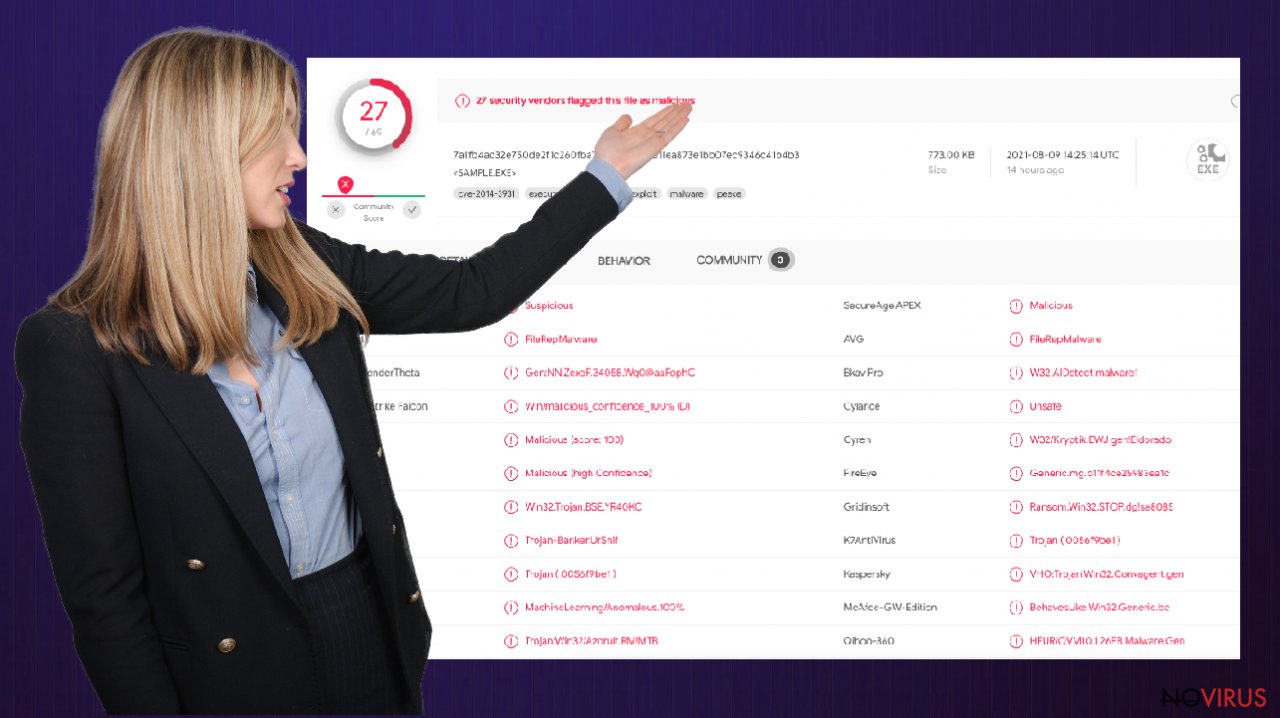
Steps that can help with infection termination
This is just one symptom of ransomware attacks as it shows that this malicious program was activated without warning and made changes on its own accord for maximum effect! Reqg ransomware also can change settings, damaged files in the system, affect other programs. You need to remove the virus as soon as possible, so rely on SpyHunter 5Combo Cleaner or Malwarebytes and clean the machine.
When ransomware and other viruses infect the machine, various processes get affected. Windows registry entries, other directories, databases of system files can get damaged or corrupted. Affected files can lead to additional system issues. Malware damage to such files triggers problems with performance and stability, security issues. Windows operating system recovery is needed then.
You should rely on proper tools that are designed to repair such files, recover smooth performance. FortectIntego is developed with the purpose to fix damaged files, repair processes, and remove other pieces of malware that get leftover. The program has a few engines and databases where needed Windows files can be found and repaired. This application also wan fix errors related to registry, damaged DLLs, and other system files. You can find links where you can download this PC repair tool, then:
- Click on the ReimageRepair.exe file.
![Download of the Reimage Download of the Reimage]()
- Choose Yes when the User Account Control (UAC) shows up.
- Press Install and wait for the installation process.
![Installation Installation]()
- The analysis of your machine with begin after the installation.
![System check results System check results]()
- Check the results listed in the Summary.
- You can choose each of the issues and fix them manually.
![PC issue summary PC issue summary]()
- If you see many problems that you find difficult to fix, we recommend you purchase the license and fix them automatically.
Using this software can save a lot of time for you and improve the performance of the machine. Various issues can get fixed and system errors solved by running a thorough system scan and repair. You can avoid manual file repair that when done incorrectly can trigger more serious damage. Automatic system repair means that you do not need to reinstall the OS or different files.
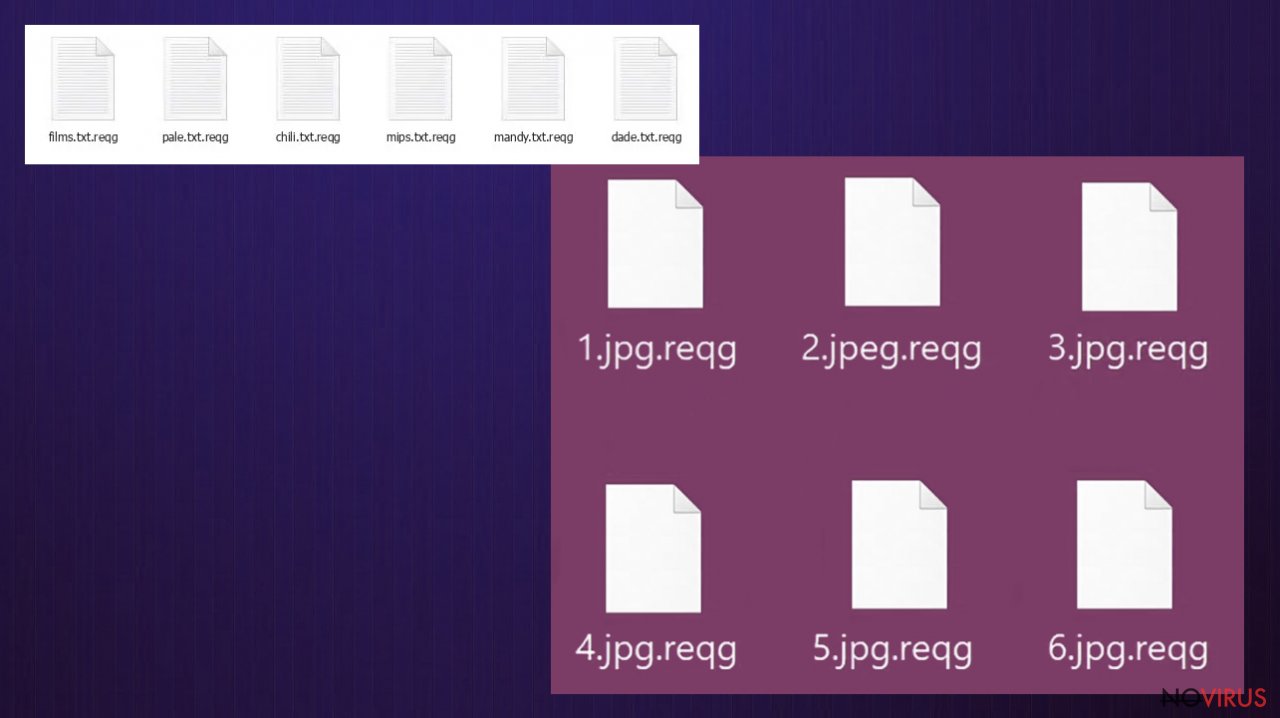
Possibilities for the data recovery
The Reqg virus is unique because it alters system data in addition to locking common files. Unfortunately, once you remove malicious files from your PC with anti-virus software or other tools after being infected, your file will not be restored back to its original state. Unless security professionals can unlock them they cannot open nor use these previously locked documents again!
There is a tool possibly capable of recovering the data, but only offline IDs used in the encryption can help that. This family no longer uses offline keys when affecting pieces of data. These advanced versions of malware cannot be easily recovered and files need more difficult solutions to get restored once encoded.
Ransomware infection and data locking are two different processes. Once you remove the malicious Reqg virus, your data needs other options. If you have backups on external devices, file copies, you can replace affected pieces with safe versions. That is rare, unfortunately.
Though some data can be restored in the event of a ransomware infection removal, once you've removed malicious files from your system and found that your files are still inaccessible or locked with an unknown file extension, it is safe to say that there may not be any way for security software to restore them. If AV tools fail to remove the threat try to enter the safe mode.
Safe Mode environment offers better results of manual virus removal when malware blocks the function of anti-malware tools in the machine.
Windows 7 / Vista / XP
- Go to Start.
- Choose Shutdown, then Restart, and OK.
- When your computer boots, start pressing the F8 button (if that does not work, try F2, F12, Del, etc. – it all depends on your motherboard model) a few times until you see the Advanced Boot Options window.
- Select Safe Mode with Networking from the list.
![Reqg ransomware Reqg ransomware]()
Windows 10 / Windows 8
- Right-click the Start button and choose Settings.
- Scroll down to find Update & Security.
- On the left, pick Recovery.
- Scroll to find Advanced Startup section.
- Click Restart now.
![Reqg ransomware Reqg ransomware]()
- Choose Troubleshoot.
- Go to Advanced options.
![Reqg ransomware Reqg ransomware]()
- Select Startup Settings.
- Press Restart.
![Reqg ransomware Reqg ransomware]()
- Choose 5) Enable Safe Mode with Networking.
Step 2. End questionable processes
You can rely on Windows Task Manager that finds all the random processes in the background. When the intruder is triggering any processes, you can shut them down:
- Press Ctrl + Shift + Esc keys to open Windows Task Manager.
- Click on More details.
![Reqg ransomware Reqg ransomware]()
- Scroll down to Background processes.
- Look for anything suspicious.
- Right-click and select Open file location.
- Go back to the Process tab, right-click and pick End Task.
- Delete the contents of the malicious folder.
Step 3. Check the program in Startup
- Press Ctrl + Shift + Esc on your keyboard again.
- Go to the Startup tab.
- Right-click on the suspicious app and pick Disable.
![Reqg ransomware Reqg ransomware]()
Step 4. Find and eliminate virus files
Data related to the infection can be hidden in various places. Follow the steps and you can find them:
- Type in Disk Cleanup in Windows search and press Enter.
![Reqg ransomware Reqg ransomware]()
- Select the drive (C: is your main drive by default and is likely to be the one that has malicious files in) you want to clean.
- Scroll through the Files to delete and select the following:
Temporary Internet Files
Downloads
Recycle Bin
Temporary files - Pick Clean up system files.
- You can also look for other malicious files hidden in the following folders (type these entries in Windows Search and press Enter):
%AppData%
%LocalAppData%
%ProgramData%
%WinDir%
If you have backups – you are saved and can move on to file recovery once the machine is cleared from the virus files. However, that is not common for users to have reputable copies of files. You need additional help, so before doing anything else double-check and see that machine is free of threats. Now you can follow the guide below and choose to restore files or wait for the updated decryption tool.
Getting rid of Reqg virus. Follow these steps
Make sure to use anti-malware tool to terminate Reqg virus
When you fall victim to a file-encrypting virus like this, it is best to rely on anti-malware programs and terminate the virus. Even though some of the cryptovirus-type threats are self-destructive and can destroy pieces of the infection after file encoding procedures, malware leaves scripts and active modules that can steal data and damage the machine further.
You should rely on Malwarebytes or SpyHunter 5Combo Cleaner since such applications can find and terminate various files related to the file-locker. Even those additional modules and other threats can be detected and removed from the system. Security programs can be used easily by various users that have no knowledge of computers and security.
Software for file restoring
Data backups are important, but users tend to skip such an important step. Also, ransomware comes without notice, so many files affected by the threat can be the ones that haven't been backed up yet. paying the demanded ransom is not the solution, so trusting criminals is not the option for file recovery.
File recovery is a difficult thing, but it is possible to retrieve those files that get affected or encrypted, in some cases. It is highly related to the fact that there are many methods to lock files. The encryption algorithm used can determine if decryption is possible. Since there are thousands of ransomware strains, it is impossible to tell if any software will work for you.
We suggest trying the program regardless of which ransomware attacked your computer. Make sure to pay attention to some details before you begin:
- Note that encrypted data on your computer might get permanently damaged by security or data recovery software, you should first make backups of it to save crucial data.
- Make sure to recover your files using this method after you perform a thorough system scan with anti-malware software.
Install file recovery software
- Download Data Recovery Pro.
- Double-click the file to launch it.

- Follow instructions to install the software.

- Press Finish and use the app.
- Select Everything or pick individual folders where you want the files to be recovered from.
- Press Next.

- Enable Deep scan and pick which Disks you want to be scanned.

- Press Scan and wait till it is complete.

- You can choose folders/files to recover – don't forget you also have the option to search by the file name!

- Press Recover to retrieve your files.
How to prevent from getting ransomware
A proper web browser and VPN tool can guarantee better safety
As online spying becomes an increasing problem, people are becoming more interested in how to protect their privacy. One way to increase your online security is to choose the most secure and private web browser. But if you want complete anonymity and security when surfing the web, you need Private Internet Access VPN service. This tool successfully reroutes traffic across different servers, so your IP address and location remain protected. It is also important that this tool is based on a strict no-log policy, so no data is collected and cannot be leaked or made available to first or third parties. If you want to feel safe on the internet, a combination of a secure web browser and a Private Internet Access VPN will help you.
Recover files damaged by a dangerous malware attack
Despite the fact that there are various circumstances that can cause data to be lost on a system, including accidental deletion, the most common reason people lose photos, documents, videos, and other important data is the infection of malware.
Some malicious programs can delete files and prevent the software from running smoothly. However, there is a greater threat from the dangerous viruses that can encrypt documents, system files, and images. Ransomware-type viruses focus on encrypting data and restricting users’ access to files, so you can permanently lose personal data when you download such a virus to your computer.
The ability to unlock encrypted files is very limited, but some programs have a data recovery feature. In some cases, the Data Recovery Pro program can help recover at least some of the data that has been locked by a virus or other cyber infection.

